Tous
← Back to Squawk list
Air Canada flight nearly lands on taxiway at San Francisco International Airport
Details are emerging about what could have been a serious incident at San Francisco International Airport last Friday night when an Air Canada plane from Toronto nearly landed on the taxiway. With ATC text (abc7news.com) Plus d'info...Sort type: [Top] [Newest]
Great catch by the UAL crew waiting to go who called out that ACA was lined up on the taxiway. They're the real heroes here!
Absolutely The scariest comment I've heard on this incident is that "the checks and balances worked as designed" so nothing really to see here. It appears to me that the checks and balances were running low, and that the UAL's radio call was an important contributing factor in averting a "Canary Islands times 4" catastrophe.
I heard former NTSB Chairman, Mark Rosenker, commenting on the recent SFO event. This type of mistake is not that uncommon and the FAA needs to improve runway markings at certain problem airports.
(From a report in 2005)
Pilots mistake taxiway for runway at Sea-Tac
At least eight times in five years, experienced pilots from five airlines have mistaken Taxiway Tango for Runway 16R.
http://www.seattletimes.com/business/pilots-mistake-taxiway-for-runway-at-sea-tac/
(From a report in 2005)
Pilots mistake taxiway for runway at Sea-Tac
At least eight times in five years, experienced pilots from five airlines have mistaken Taxiway Tango for Runway 16R.
http://www.seattletimes.com/business/pilots-mistake-taxiway-for-runway-at-sea-tac/
The inbound flight was AC 879, an A320 from YYZ. Sitting on the taxiway C were (in order) UAL 1, a B787-900 bound for Singapore; PAL 115; an A340-300 bound for Manila; UAL 863, a B787-900 bound for Sydney; and UAL 1118, a B737-900 bound for Cancun. If all five planes had been involved, it could easily have been the greatest aviation disaster in history.
How close did AC get before a go-around was ordered? The pilots were clearly concerned about lights across the runway and were probably getting ready to go around anyway (they should have been trained "When In Doubt - Go Around"). If they were close enough, they would've noticed the lights were blue instead of white.
Also, they would've noticed their CDI (course deviation needle) or localizer diamond drift further to the left.
No, I'm not an ATP but I DID stay at a Holiday Inn Express last night. (hehe) So the above are just my thoughts from my freshman year of training.
Also, they would've noticed their CDI (course deviation needle) or localizer diamond drift further to the left.
No, I'm not an ATP but I DID stay at a Holiday Inn Express last night. (hehe) So the above are just my thoughts from my freshman year of training.
Preliminary reports say it passed 100 feet above the first 2 aircrafts lined up on the taxiway, 200 feet above the 3rd aircraft and 400 feet across the last one.
400 feet
What was the Minimums?
Situation was VFR at the time
